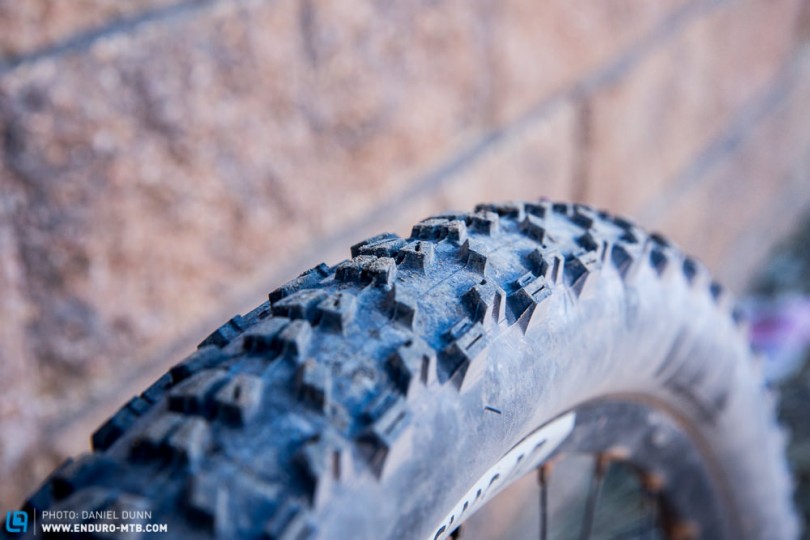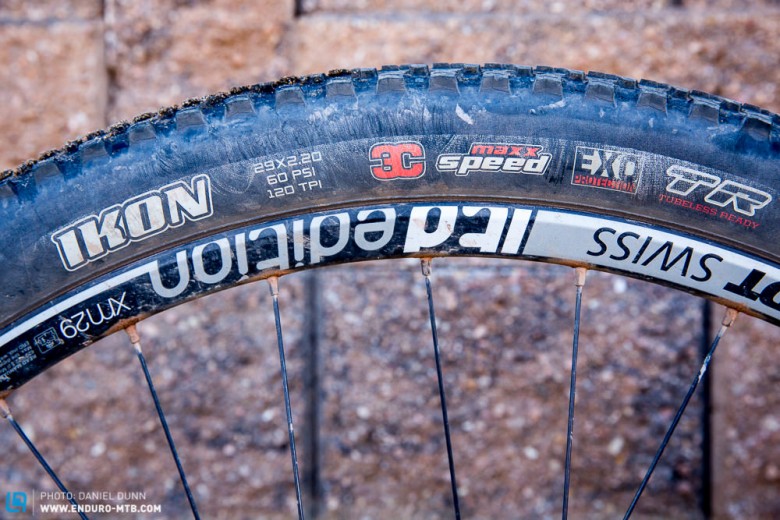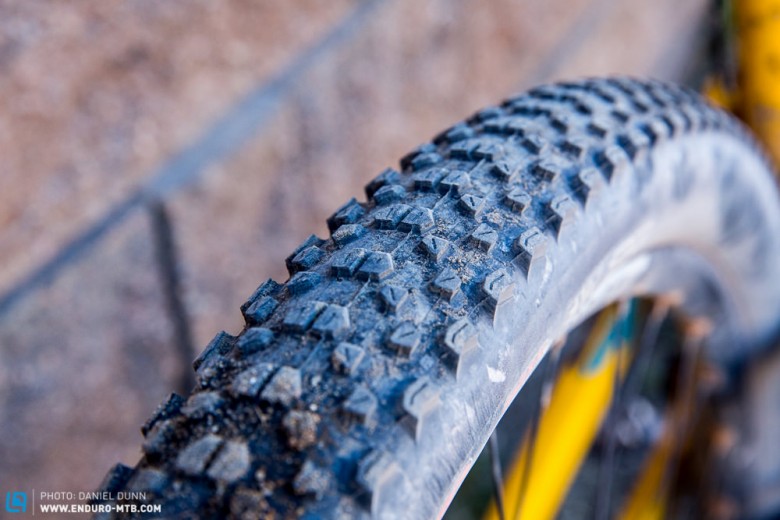Team Tested: Maxxis Ardent and Maxxis Ikon Review

The long term test bike of US Editor Daniel Dunn, a Yeti SB95, came equipped with Maxxis tires, Ardent 2.4 up front and Ikon 2.2 rear. Keep reading with the review here, and find out if it’s the right rubber combo for you.

Technical Details
Weights of the tires for the 29” version are:
- Ardent – 29×2.4 – EXO – 805 grams
- Ikon – 29×2.2 – 3C/EXO/TR – 645 gr
Both tires have a carbon fiber, foldable bead. They also both have the EXO sidewall, which is Maxxis lingo for a reinforced casing that’s more than an XC tire, and less than a double, downhill casing. Call it 1.5 wall casing. A cut and abrasion-resistant material added to the sidewalls. Maxxis says “Choose EXO Protection for exceptionally rocky, treacherous trails where the chance of sidewall cuts and abrasions is high.” In other words, enduro racing. Also anyone out there who wants to charge aggressively in their daily riding. . The EXO is meant for riders who care more about the downhill oriented qualities of what the tire can give them, than being light weight. Maxxis also constructs many of their downhill tires with the EXO casing, with those tires becoming a choice for many top enduro racers.

Both tires are also “TR” or tubeless ready. Lots of tires now, especially those you find on on $3000 or more bikes, are tubeless ready, but a lot aren’t, so it’s nice to know that Maxxis makes a distinction, and lets you know it.
Bought separately, the Ardent is available for $50, with the slightly more expensive, dual compound Ikon being found for $65. Pricing always has great variety depending on where you live, and even time of year. I find this pricing to be completely in line with other brands of tires, at this quality range. Therefore, on the “value” scale, they’re average value. Find them on sale somewhere, and you’re obviously getting a higher “price-value-ratio”.

Riding
The tires match up to the bike very well, and fit perfectly with the other characteristics of the bike. They handle well on a nice range of conditions and roll with speed, especially the Ikon. For most people, on most conditions, these are great tires. But if you’re reading this, you probably want more info.
Let’s start with some characteristics of both tires and bit on where I’ve been riding. Lots of Moab and Fruita slick rock with a ton of square edged rock hits. Santa Cruz dirt with some mud, and a combination of different conditions on three days of hard riding in Durango, CO. Lots of hucks to flat landings. I’m learning how to hit double jumps and have cased many landings. And I’ve had zero flats, in all of that range of conditions, for both tires. I’m impressed with that.
I’m riding both tires tubeless, with the Ardent at 27 psi and Ikon at 30 psi. I think the ground feel coming from both tires is fantastic at those pressures. You have great sensation of whatever it is you’re riding on or over. But not in a harsh, I feel like I’m going to flat, sort of way. I think the EXO sidewall is an excellent example of enduro racing pushing technology to create a better product.

The Ardent seems to really excel in typical mountain conditions of Colorado. Mostly dry dirt, sometimes very hard packed, not soft and grabby dirt like you’d find in North Carolina or the loamy loose goodness of a lot of riding in British Columbia. Fast rolling dirt that offers some grip, but throw in a big mixture of loose baby head type rocks and very often sections of flat rock. Most people would describe Colorado mountain riding as loose and fast, but not extremely so. The Ardent does great on that.
It corners well, and I’ve yet to experience any sort of buckling. However, for racing, and especially if the race is more downhill oriented that pedally, I would go with a more aggressive tire like the Maxxis Minion or High Roller. The Ardent only comes in a single compound variety, whereas the Minion and High Roller both not only have a more aggressive tread pattern, but are available as dual compounds for better cornering grip. That difference is noticeable in high speed corners, where ultimate hook up is needed.
The Ikon will be a great tire for many. It rolls exceptionally fast, but the other side of that story is a lack of grip. This tire breaks away a bit too much for my taste. I did race it in Moab, when the course was very pedally. It performed great. A lot of riding in Moab is on “slick rock”. Sheer rock for miles. This tire, with it’s lack of tread, does very well under those conditions. Too much aggressive tread will just wear down fast, while not offering any benefit. But I don’t like it when the going gets steep and twisty. I recently rode the Haflin trail in Durango, a 3500 foot descent over approximately 4.5 miles. It was VERY steep for much of the trail, and I was looking for more grip, and better braking performance from my rear tire.
The Ikon comes in many different varieties and compounds, the one I’m using is a dual compound, in Maxxis terms “3C Maxx Speed”. Let me stress, this tire is fast. Low rolling resistance combined with an XC tread pattern, and this tire is a rocket. I do know that Jared Graves used this tire for some of the EWS rounds last year.
Neither of these tires do well in the mud, with the Ardent being better, and the Ikon being plain bad. Not a mud tire, but not a surprise there.
Both tires are wearing (or not) at a great rate. The overall durability, or longevity, on these tires, is above average. Ridden in a great variety of terrain, with many miles spent on tire shredding rock in Moab, these tires are holding up in great style.
Overall, the combo of the two tires is a great “starter” kit and, in my opinion, speccing them on the SB95 was a smart choice. I started by saying that these are great “do it all” tires, and the other part of that is they do not excel in most areas, but are fine for a general tire set. For racing, and by spending more money, you can definitely make better choices. The SB95 is certainly capable of racing off the shelf, and I have, but it needs some tweaking to really perform at it’s best, and for the racer to ride with utmost confidence. However, the SB95 wasn’t really made to be an enduro race bike, it was made to be an awesome trail bike. A bike to go on long mountain rides on all the awesome trails in Colorado and elsewhere, so again, putting these tires, on that bike, was a solid choice.
Bottom Line
If you’re racing, spend a little bit more money, go for the dual compound Minion or High Roller II. Find a review of the High Roller II’s here. If you’re not racing, and just want to ride, yes, I recommend these tires for 99% of the riding you’ll encounter. Double recommend for riding in the Colorado mountains, or similar terrain.
Did you enjoy this article? If so, we would be stoked if you decide to support us with a monthly contribution. By becoming a supporter of ENDURO, you will help secure a sustainable future for high-quality mountain bike journalism. Click here to learn more.







